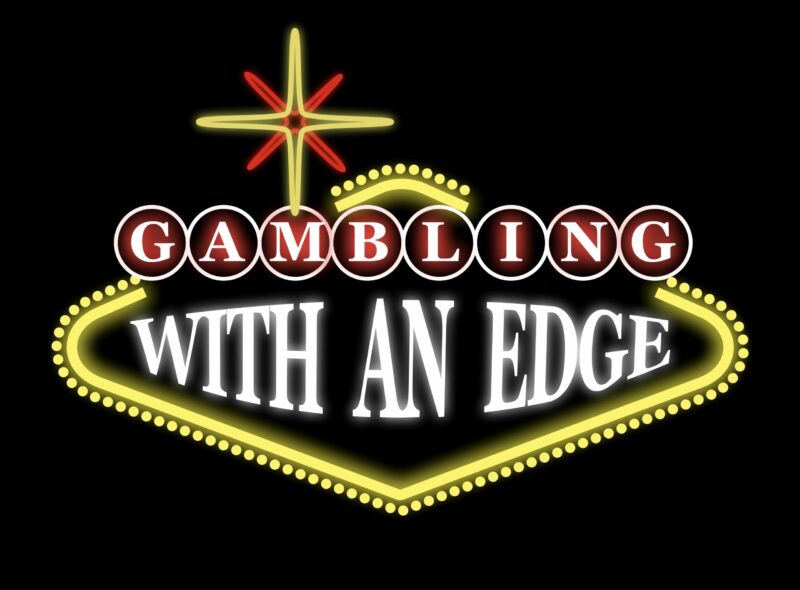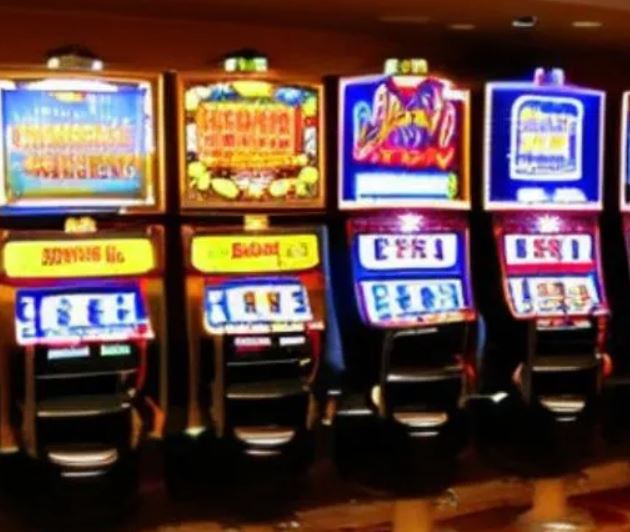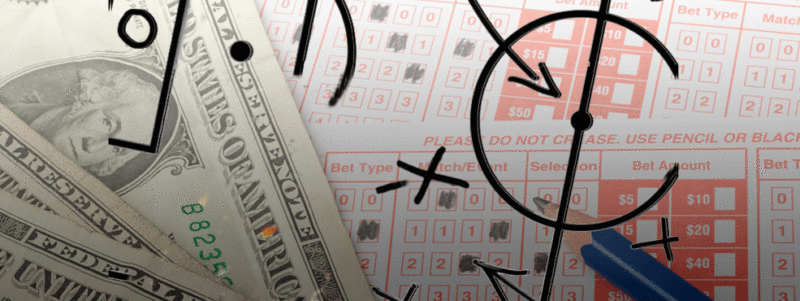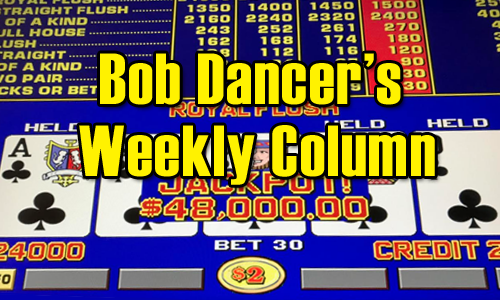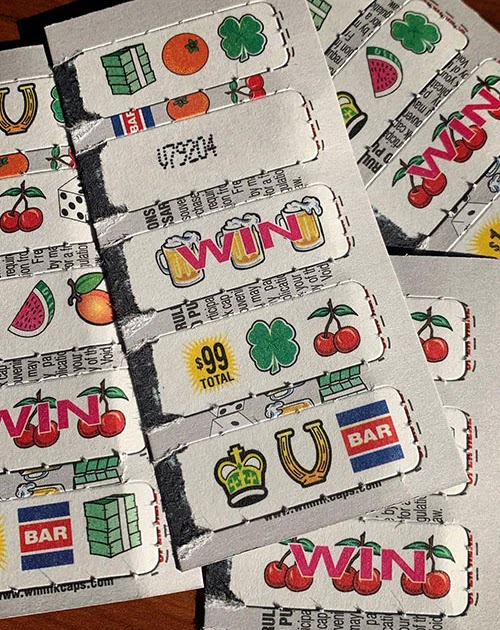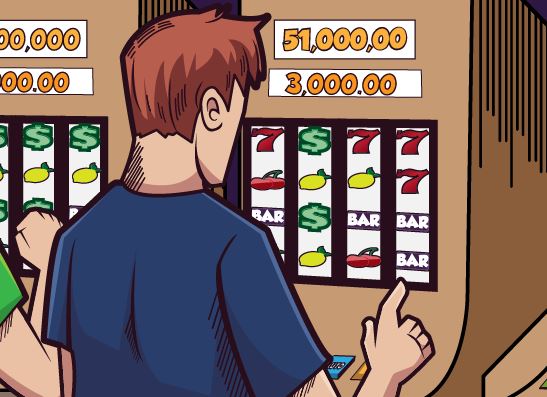When you walk into the Fraternal Order of Eagles club in South Minneapolis, you’re greeted by the croak of a bingo caller. The bar, locally known as Eagles #34, is thrumming with the sounds of a local punk band soundchecking on the other side of wooden accordion doors. Dart league has just wrapped up, and teammates are gathered in a booth, ripping excitedly at paper cards and drinking Michelob Golden Light.
This is Minnesota bar culture, distilled perfectly into a set of communal rituals. At the center are 2-inch-by- 1-inch tickets with little perforated tearaway strips called pull-tabs. They work like a scratch ticket or a little cardboard slot machine. The goal is to rip away the strips and uncover a set of matching symbols. The tearing of the pull tabs establishes a rhythm that underscores the rest of the activity in the bar.
As the night bores on, the spent cards pile up in red plastic fry baskets, strips curled away from the card in defeat. The game manager — in this case, a saintly older woman with Martin Scorsese glasses — sits at the front of the room, surrounded by clear boxes of unclaimed tabs. Some call her stand the “jar bar.” Prizes, some as high as $700, are labeled on the outside. Every once in a while, that cadence of ripping and shuffling is interrupted by a triumphant yelp. Someone’s pulled a winner. They hand the lucky card to the manager, who blots out the prize on a sign with a big orange dot, and takes a tip for her trouble.
Thirty-eight other states sell pull-tabs, including Minnesota’s neighboring rival Wisconsin, which is more often lauded for its dive bar traditions. But this scene is purely Minnesotan.
According to 2019 data from the National Association of Fundraising Ticket Manufacturers (NAFTM), a trade organization for pull-tabs manufacturers, Minnesota raked in $1.97 billion in gross receipts from pull-tabs that year, 533 percent more than the average of the 13 other states polled. In 2012, Minnesota became the first state to legalize electronic pull-tabs in an effort to offset the cost of building the Minnesota Vikings’ new home field, U.S. Bank Stadium. Minnesotans responded with so much gusto that the stadium is nearly debt free, 20 years ahead of schedule. In 2022, electronic and paper pull-tabs brought $4.02 billion in wagers, netting the state over $425 million in revenue.
Nowhere in the world are pull-tabs such an ingrained part of a night out as they are here in Eagles #34 and the thousands of other bars between the St. Croix and Red Rivers. But how did the North Star State rise so high above its peers and become the pull-tabs capital of the universe?
Barnstorming for Bingo
It’s no coincidence that bingo and pull-tabs are often found in the same bar. It was in the 1970s that bingo halls, veterans’ organizations, and fraternal orders first started to expand into the “instant bingo” cards known today as pull-tabs. These games were, at the time, illegal.
Even though Minnesota had legalized bingo games for charitable gambling in 1945, pull-tabs were expressly disallowed. But the decades after saw a gradual expansion of acceptable bingo games. In 1978, the state legislature expanded the types of bingo allowed to include things like raffles and paddle wheels. According to a history written by the Minnesota House Research Department, sanctioning these games was merely “a recognition of a form of gambling that was already widespread despite being illegal,” but even so, pull-tabs were seen as “a minor part of the gambling picture.”
In 1981, pull-tabs finally got added to the list of legal bingo games. But there was a variable the legislature hadn’t calculated. In the 1978 law change, they’d allowed for any business with a liquor license to hold such games. The intention was to keep them at private clubs, but because pull-tabs were played out of a very portable booth with a small footprint, charities began to rent space in public bars.
In states like Texas and California, pull-tabs could only be sold at official bingo games, and often bars were not eligible to host. Even in Wisconsin, there was a raging debate about the legality of pull-tabs that kept them from ubiquity. But Minnesota took the restrictor plates off — even if that wasn’t the legislature’s intention — and the game exploded out of small fraternal clubs and into mainstream life.
“Most clubs [where pull-tabs are found] around the country are closed clubs, only open to members and guests,” explains NAFTM president Mary Magnuson. “Minnesota is odd by comparison, because ours tend to be public.”
In 1984, responsibility for regulating pull-tabs was transferred to the state, and the Gambling Control Board was founded. Games were so prevalent that Attorney General Hubert H. Humphrey III wrote that Minnesota was “on a gambling binge,” and by 1989, charitable gambling surpassed $1 billion in gross receipts for the first time.
Pull-tabs are now available at everyday bars in states like Nebraska, Ohio, Massachusetts, Alaska, and North Dakota, Magnuson says. And others, like Washington and Indiana, now allow for pull-tabs that have no charitable purpose. But as more states have brought on the old model, Minnesota has innovated new ways to bring the game to larger audiences.
In 2012, Minnesota became the first state to legalize electronic versions, further embedding the pop-and-win sensation into bar life in the Gopher State. Played via touchscreen terminals like video poker, e-tabs allow players to gamble at the bar rail, without any of the waste or the pageantry.
Minnesota’s gusto for pull-tabs may be mostly due to sheer exposure — in no other state is the game of chance so common — but Magnuson, a St. Paulite, supposes that there is something of a social X-factor. Minnesota consistently ranks as one of the most charitable states in America. Proceeds of pull-tabs once benefited local church parishes, but now they’re more likely to support causes close to Minnesotans’ hearts, like affordable housing programs and youth hockey teams. When you combine that philanthropic nature with the ubiquitous opportunity to exercise it, you arrive at a cultural touchstone.
“It’s embedded in Minnesota,” Magnuson says. “I think people have a sense that, even though they’re spending money, and they may actually be losing money, that money goes to a good cause, anyway.”
Take a Chance at the Dive
Bill Lindeke, a lecturer of Urban Studies at the University of Minnesota and MinnPost columnist, has maintained the loving, ground-level blog Twin Cities Sidewalks since 2005. He’s also produced several booklets profiling the dives of both Minneapolis and St. Paul, and in each he lays out the trappings of the aesthetic: greasy food, drop ceilings, and pull-tabs.
Borne in the fraternal clubs and veterans organizations, pull-tabs have thrived in dives and down-home neighborhood places where regulars come to sip and tear. Lindeke’s booklets and his 2019 tome “Closing Time: Saloons, Taverns, Dives and Watering Holes of the Twin Cities,” written with Andy Sturdevant, are littered with references to Minnesota’s favorite game, telling the lore of places like Half Time Rec, once embroiled in a pull-tab profit-skimming scandal, and the windowless Vogel’s Lounge.
“I would put pull-tabs in [the] category of vernacular, idiosyncratic, cultural bar traditions,” Lindeke says. “It’s one of those things that if you see it, you know you’re in an old-school, very local, kind of place.”
When local restaurateur Doug Flicker and his wife Amy Greeley took over the notorious Sunrise Inn, they inherited a piece of Twin Cities dive bar history. Flicker called the place “a drinking bar,” a no-frills hole in the wall embedded in a neighborhood that dreaded the derelicts it attracted.
Flicker wanted his new pub to pay homage to this classic piece of drinking culture. Opened in Sunrise’s former location in 2017, Bull’s Horn Food and Drink not only honors its forebear, but the countless other lowbrow spots littered across the Minnesota landscape. There’s greasy food, a weathered wood bar, cheap beer, a jukebox, bubble hockey, and, right at the back, straight down from the doors, a pull-tab booth stacked with clear boxes.
Flicker admits he could probably make a lot more money by putting a table in place of the booth, and says he barely makes any money from renting the space to the pull-tabs vendor. But his commitment to the dive bar aesthetic would not be complete without the game on site. It takes him back to his days as a kid, watching his parents drink in his uncle’s bar, Flicker’s Liquors in the northern town of Pierz.
“It’s just one of those things that I never questioned really where it came from or what it was,” Flicker says. “It was something they would do, and they would have fun doing it, and every once in a while, they would win a couple bucks.”
Lindeke prizes the communal aspect of pull-tabs, something that becomes a fabric of a night in a place like Bull’s Horn. There are certain traditions Minnesotans have, and if you’re bellied up with some regulars, you need to know the etiquette.
You purchase tabs in rounds. Maybe everyone puts in a couple bucks per round, or maybe each person puts down a $20 bill for the table. But you buy together, rip together, and win together. If you pull a $200 or $500 winner, that’s not your money — it’s everyone’s, and everyone celebrates with you. You may pocket some cash, but you’d be better served buying some pitchers and a couple Heggies frozen pizzas for the table. Oh, and always tip the game manager for your good fortune.
There are also customs for losing tickets. Some discard them in piles around their barstools, a careless gesture that isn’t seen as rude but as a monument to misfortune. Most people collect spent cards in fry baskets. Others fiddle with them, building houses of cards or folding them together in slapdash origami.
If you’re lucky, you’ll be playing on a night where there’s a run on the box. That’s when the supply of tickets in the plexiglass gets low without the big jackpot being claimed. The excitement in the air starts to percolate. Lines form at the counter, with patrons throwing down bills to try and turn the average night into a legendary evening. If it goes well, the whole box gets bought out, and whenever that big winner gets pulled — whoever in the bar pulls it — the whole place erupts.
“I was at a bar called Shadey’s [in St. Paul] one afternoon, and a bunch of the regulars started just pulling out hundreds of dollars out of the ATM and buying all the pull-tabs,” Lindeke says. “They saw there were a bunch of winners left, and there were only so many to go. Somebody made some serious money that day.”
Pulling for a Future
When e-tabs debuted a decade ago, Lindeke was concerned that the “kitschy, interesting, almost innocuous” traditions around pull-tabs would be lost, effectively turning a communal game into an iPad casino app. In 2012, when e-tabs first appeared, he wrote they would “ruin everything.” Lindeke’s concern, though bombastic, was shared by many, who feared cheaper operations would make paper pull-tabs obsolete.
“These are endangered species, really,” Lindeke says. “Drinking culture today is less social and more individualistic. Pull-tabs are part of this disappearing social world of the local bar, where it’s people from the neighborhood, and pull-tabs are dependent on those sorts of local connections and communities.”
Lindeke’s concerns have not yet come to fruition. E-tabs now represent over 47 percent of all pull-tabs receipts but both forms of the game are on the rise. Despite concerns that the pandemic would put 45 years of pull-tabs to an end, betting in 2022 was up 37.4 percent over 2021 and 104 percent over 2020.
“I don’t think we’re going to see a change in people’s interest in either paper or electronic gaming,” Magnusaon says. “I’ve heard from bars who will say that, even though they may not participate in the proceeds, they are very interested in having [pull-tabs] to be competitive with the bar down the street that also has them.”
Over pull-tabs’ 45-year legal history, the bar landscape has changed dramatically. Fraternal and veterans organizations struggle with membership now more than ever, as the Vietnam War generation dies off and younger people find their community online. The pandemic laid waste to the bar scene, with low-rent dives being particularly affected. In the Twin Cities, long-tenured bars like Liquor Lyle’s, Williams Uptown Pub & Peanut Bar, and the Unofficial have all closed, leaving fewer homes for physical pull-tabs counters to operate in.
Magnuson is careful to attribute a rise in gross receipts to an increase in people playing. Ticket prices have increased over the years, from the standard $1 to as high as $5, so it could be a smaller percentage of people spending more money.
But Flicker isn’t the only establishment owner who was raised to a soundtrack of pull-tabs tearing, and the next generation of Twin Cities proprietors are the first to live full lives in a legal pull-tabs system.
Murphy Johnson’s father was a beer distributor, and he and his brother Cooper spent a lot of time in local bars, breathing the atmosphere. When the family opened BlackStack Brewing in St. Paul in 2017, they resolved to incorporate those traditions. The taproom features a pull-tabs vending machine, which despite not being as classic as a booth, still gives the same ephemeral nostalgia of those old rural dives in their airy, hypebeast-y brewery.
“As a kid, it was kind of mysterious,” Johnson says. “Once I got older, it was something where, sometimes you have a few, and you play, and sometimes you get in trouble. You almost never win, but occasionally you hit big. Sometimes you win, sometimes you lose, but they’re always there.”
Murphy memorialized the comforting ubiquity of the game in Pull Tabs, a 6 percent ABV hazy pale ale that BlackStack released in 2022. The beer is an emblem of how the craft brewing industry has taken up the cause of their forebears, bringing pull-tabs to the modern Minnesota drinker.
Craft beer was once at odds with the pull-tabs ethos (one of Lindeke’s criteria for a dive bar is a dearth of microbrews). But now, as breweries rise to fill the role of third places in modern society, destinations like BlackStack, Plymouth’s Luce Line Brewing, Eagan’s Bald Man Brewing, Robbinsdale’s Wicked Wort Brewing Company, and St. Cloud’s Pantown Brewing are becoming bastions of pull-tabs preservation — and they’re doing it for the same reasons the game rose to prominence 45 years ago.
“When you do win, it’s [the] bonding that comes from it that I love,” Johnson says. “You’re in it together, up or down. It’s about the camaraderie more than the money.”
